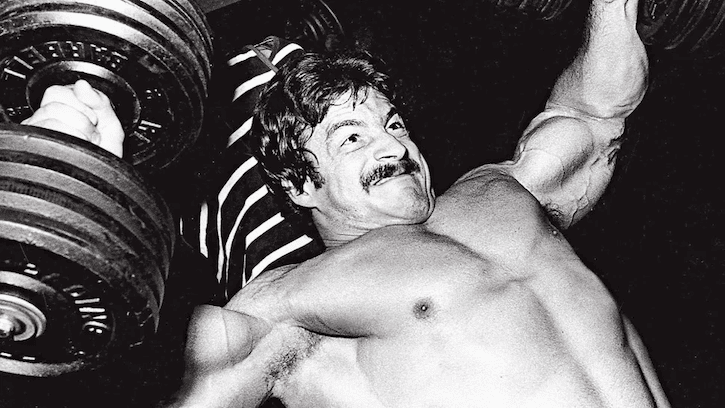What you'll learn:
➤ How Much Protein to Build Muscle
Maintaining and building muscle through protein intake is key alongside your strength training routine.
You’ve got aerobic workouts like walking, running, or cycling, plus strength training like lifting weights. It’s all about finding what suits you and sticking to it regularly for maximum health benefits.
The American College of Sports Medicine (ACSM) recommends at least 30 minutes of moderate exercise five days a week, or 20 minutes of more intense workouts three days a week.
You can mix moderate and intense activities to hit these goals.
For aerobics, think walking, running, cycling, swimming—activities that get your heart pumping. Then, don’t forget strength training.
Do it at least twice a week, focusing on 6-12 reps of 8-10 exercises that target all your major muscles and promote muscle hypertrophy.
You can use your body weight, resistance bands, weights, or machines—it’s about finding what works for you!
What Is Protein?
Proteins are the building blocks in our bodies, found in every cell and tissue, including muscles.
Our body constantly recycles proteins, using the ones we eat to replace the broken-down ones, maintaining this balance.
Amino acids make up proteins, and there are two types: essential and non-essential. Essential ones, necessary for our body but not produced by it, must come from our diet.
Complete proteins have all these essential amino acids, found in animal-based foods like meat, fish, eggs, and cheese.
Foods like rice or beans have protein but might lack some essential amino acids. Combining them helps cover all bases.
You’ll find protein in meats, legumes, tofu, eggs, nuts, seeds, dairy, and even some veggies and fruits, though in smaller amounts.
Animal-based protein tends to be absorbed better than plant-based, but vegetarians can still get enough protein by mixing various plant sources to ensure they cover all essential amino acids.
Here’s a breakdown:
- A cup of milk: 8 grams of protein
- A cup of soy milk: around 7 grams
- An egg: 6 grams
- A 3-ounce meat piece: about 21 grams
- A cup of dry beans: about 16 grams
- An 8-ounce yogurt container: around 11 grams of protein
Protein Intake Recommendation
About 10-35% of your daily energy should come from protein. For a 2,000-calorie diet, that’s roughly 200 to 700 calories from protein.
Another method: aim for 0.8 grams of protein per kilogram (or 0.35 grams per pound) of body weight each day. For instance, a person weighing 75 kilograms (165 pounds) should target around 60 grams of protein, equaling 240 calories.
Mixing aerobic exercises like walking, running, or cycling with strength training benefits heart and muscle health.
Aim for at least 30 minutes of moderate exercise five days a week or 20 minutes of more intense workouts three days a week. Include strength training twice a week with 8-12 reps of various exercises targeting major muscle groups.
Building muscle happens when the body synthesizes more protein than it breaks down. This synthesis peaks after workouts, especially with resistance exercises like weightlifting.
As we age, increasing protein intake to around one gram per kilogram of body weight (around 50 years old) helps maintain muscle mass. For those regularly exercising or aiming to build muscle, aim for 1.2-1.7 grams of protein per kilogram of body weight daily.
For instance, our 75-kilogram person might need 75 to 128 grams of protein to gain muscle mass. Generally, this can be achieved through a balanced diet without extra supplements.
When to Take Protein
Before Exercise
It’s essential to have enough energy, including protein, before exercising. Starting a workout on an empty stomach can increase protein loss, making it harder for your body to repair and build muscle.
Research shows that having protein before a workout can improve body composition by increasing the calories you burn even after exercise. Plus, it might help increase muscle mass and reduce fat.
Post Exercise
After your workout, having protein can significantly impact muscle growth. Studies suggest that consuming protein after resistance training can stimulate muscle protein synthesis for up to three hours.
Skipping post-exercise protein intake might limit this synthesis and hinder muscle development. There’s this concept of an “anabolic window” where having protein within an hour of exercise has the most impact on building muscles through resistance training.
In a nutshell, having protein before and after exercise can help with muscle repair, growth, and overall body composition.
What Protein to Take
Whey Protein
Whey protein is great for supporting muscle changes because it gets absorbed quickly. This helps with muscle recovery after workouts.
Casein
Casein protein absorbs slower, giving a steady supply of amino acids over a few hours. Both whey and casein have their unique benefits.
Branched-Chain Amino Acids (BCAAs)
BCAAs help in post-exercise recovery by boosting protein synthesis, refilling muscle glycogen, and delaying fatigue.
They usually come in a natural 2:1:1 ratio of leucine, isoleucine, and valine, found in animal proteins. This ratio seems to provide the best muscle support during exercise.
To meet the recommended intake, aim for about 45 mg/kg/day of leucine and 22.5 mg/kg/day of isoleucine and valine. This combo helps with muscle adaptations when you’re training.
➤ Final Thoughts
Protein supplements can help build muscles alongside regular exercise. But following the recommended protein intake can usually be managed through a balanced diet, without needing extra supplements.
The perks of resistance training and timing your protein intake extend beyond sports or physique enhancement—they can also help delay age-related muscle loss, preserving strength and independence in older age.
Being physically active leads to longer, healthier lives. Even 30 minutes of brisk walking daily contributes significantly to longevity.
Physical activity benefits everyone, even those with risk factors like high blood pressure, diabetes, or smoking habits. Exercise not only aids weight loss but also helps control blood pressure, blood sugar, cholesterol levels, and strengthens bones.
Before diving into a new exercise routine or significantly increasing your activity level, consider a fitness test or answer some key questions.
If you’ve had heart issues, chest pain during or not during activity, dizziness or loss of consciousness, joint problems, or are under specific medication, consult a doctor. If none of these apply, you’re likely safe to start exercising.
It’s crucial to get medical evaluation and clearance before starting any exercise program. Not all routines suit everyone, and some may lead to injury. Always work at a comfortable pace, stop any exercise causing pain or discomfort, and seek medical help if needed. Safety first!
⬇️ More from thoughts.money ⬇️
- The Science of Success: 17 Proven Steps to Achieve Any Goal
- 8 Proven Money Lessons From “The FALCON Method”
- A Must-Know Lesson From “The First Rule of Mastery”
- 5 Early Retirement Tips From “Playing with FIRE”
- 7 Life Lessons From “Die with Zero”
- 4 Money Lessons From “Tax-Free Wealth”
- 5 Practical Tips From “The Value of Debt in Building Wealth”
- 8 Emotional Intelligence Lessons From “The Power of Nunchi”
- 6 Down-to-Earth Lessons From “How I Invest My Money”
- 8 Life Lessons From “The Geometry of Wealth”
🔥 Daily Inspiration 🔥
“Whether you think you can or you think you can’t, you’re right.”
― Henry Ford






